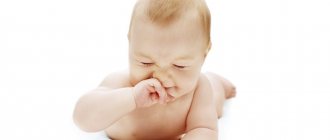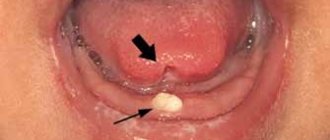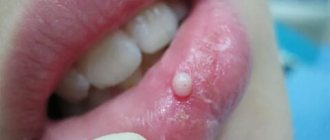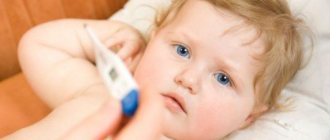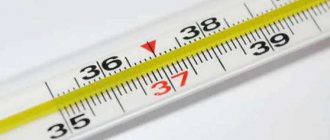You can help a child who is teething using both medicine and traditional methods. Babies experience severe discomfort and need the love and support of loving parents more than ever. The pain syndrome can be minor, so sometimes lightly massaging the gums and using teethers with cooling gel are enough to relieve symptoms. All methods are selected individually for each little patient. The eruption of teeth occurs in a certain order, so mom and dad are able to predict where inflammation and swelling are localized and direct all efforts to eliminate pain and itching.
Children's teeth
Every healthy baby eventually shows its first incisors. Their appearance obeys the laws of nature, the process is accompanied by certain symptoms, which in most cases are the same and go away in a few days. If you provide the baby with comfortable conditions and help cope with unpleasant sensations, the painful period will pass almost unnoticed.
Teething symptoms
Attentive parents can notice how the behavior of a little person changes when the first dental units appear. Panic arises from not knowing what to do when teeth are being cut, because the child often cries, and mom and dad forget about night rest and peace during the day. Other characteristic features:
- swelling of the mucous membranes and gums;
- excessive salivation;
- increase in body temperature to subfebrile levels and higher;
- a constant desire to put everything in the mouth and chew due to pain or itching;
- sleep problems;
- tearfulness, irritability or complete apathy;
- refusal of the mother's breast or bottle;
- stool disorders (diarrhea, constipation);
- redness of the throat due to increased blood flow;
- vomiting, excessive and frequent regurgitation;
- nasal congestion, cough;
- allergic rashes (in rare cases).
The listed symptoms are not always observed. Sometimes babies are not worried at all and behave as usual, so changes that have occurred can only be detected by examining the oral cavity. In the place of future dentition, white dots are visible - parts of crowns that have not fully erupted.
The emergence of fangs is often accompanied by pain in the eyes. The baby rubs them with his hands, blinks frequently, and may experience lacrimation.
Early signs
The gradual emergence of teeth from the gums in infants is called eruption. On average, the process lasts from 4 to 8 months. Each organism is individual, so for some, an important stage begins at 3 months or 1 year.
As a rule, it occurs a little earlier in girls. Caring parents know how to recognize that their child is teething.
The symptoms look like this:
- redness and swelling;
- a large amount of saliva;
- children constantly pull various objects into their mouths, gnaw and bite them;
- decreased appetite or refusal to feed;
- habitual sleep patterns change;
- body temperature rises;
- diarrhea;
- there is a small rash on the skin;
- cough, runny nose.
The period of dental growth in children and the first signs
Many symptoms resemble other pathologies, but a typical manifestation is that the child puts everything in his mouth and chews on toys to relieve pain. Behavior often changes and children become nervous and restless.
The gums almost always swell. A few days before the important moment, you can feel hard areas. A large amount of saliva is released and irritates the skin, so a napkin and baby cream are used.
It is important to know how to calm your baby when teething.
Recommendations! Despite the fact that such a period is natural, high fever, diarrhea and a sharp deterioration in condition should be a reason to immediately consult a doctor.
If the natural state is not complicated in any way, it is not worth using drugs at the natural stage of his life. It is better to show the children to the doctor and carefully monitor their well-being.
In what order are teeth cut?
Before facilitating teething in a child with the help of drugs or non-drug methods, it is necessary to understand the sequence of appearance of all units and check for any deviations from generally accepted norms. The incisors come out first, then the premolars, canines and molars. However, each person’s body is individual, so small exceptions to the rules are possible.
Some babies show crowns very early, before six months of age. For other children this happens several months later.
Experts say that by the age of 3, a baby should have 20 crowns visible. Sometimes anomalies occur: incorrect placement and curvature of the rows, as well as darkening of the enamel. A brown surface may indicate that the expectant mother took antibacterial drugs during pregnancy. A yellow-green color often indicates problems with bilirubin metabolism. Also, in some cases, such a sign indicates liver disease and the death of red blood cells (erythrocytes).
Timing of teething in children
The upper and lower central incisors are fully erupted, usually at the age of 1 year. The process begins as early as 6 months. The lateral ones grow not much later. The canines emerge on the surface of the gums before the age of two; the growth of premolars and molars can extend over a longer period.
Parents should not panic if suddenly the baby’s first front teeth appear on one of the jaws, but on the other they are cutting only on the side. At the same time, it is important not to miss serious chronic pathologies, which are also accompanied by violation of generally established deadlines. If you have doubts that everything is in order, it is better to consult a doctor. Dental specialists will advise mom and dad, conduct diagnostic tests and, if necessary, refer you to specialist doctors.
Rating of the best teething remedies
| Nomination | Place | Name | Price |
| The best gels with an analgesic effect | 1 | Kamistad Baby gel | 305 ₽ |
| 2 | Kalgel | 460 ₽ | |
| 3 | Dentinale Natura gel | 860 ₽ | |
| 4 | Baby Doctor gel first teeth | 340 ₽ | |
| 5 | Dentinox | 320 ₽ | |
| 6 | Holisal | 390 ₽ | |
| 7 | Pansoral first teeth | 402 ₽ | |
| The best organic and homeopathic remedies | 1 | Dantinorm Baby | 540 ₽ |
| 2 | Dentokind | 570 ₽ | |
| 3 | Viburkol | 430 ₽ | |
| 4 | Boiron Camilia | 700 ₽ | |
| 5 | Christopher's Original Formulas Kid-e-Col Extract | 1940 ₽ |
How to help without drugs
Medications are actively used during teething, but how to calm a child when teething using other methods? Massage prescribed by a dentist is highly effective. This way pain is eliminated by slight pressure. Another option is cooling the gums, which causes vasoconstriction (the principle is similar to the effect of ice on bruises and other injuries).
You need to massage painful areas exclusively with clean fingers. Silicone brushes are also suitable, suitable for babies six months of age and older. It is necessary to wash the accessory well and, if possible, sterilize it. Care should be taken to avoid excessive pressure. Some people are of the opinion that physical interference with the natural course of events can subsequently lead to caries and other pathological processes, but this is wrong.
Pharmacies and children's stores sell special teethers made of silicone and other soft materials that do not form jagged edges when chewed. The most effective are models with a non-uniform ribbed surface. Silicone rings with a gel-like substance inside are also used for cooling. You need to place the item in the freezer for a short time, and then give it to the baby.
Chilled complementary foods (mashed potatoes, juice, cottage cheese) will also relieve pain. A one-year-old can be offered a cool banana or apple.
Help at night
The pain becomes especially severe at night. If sleep is disturbed, the baby constantly cries and is capricious. An integrated approach will help to cope with the problem.
First of all, they take him in their arms. Apply a special preparation to the gums and measure the temperature. Use chilled teethers or water with a pacifier in a bottle.
To avoid nighttime whims, it is recommended:
- before bed, take a herbal bath of chamomile or string;
- feed and give water;
- Apply the pain-relieving gel prescribed by the doctor to painful areas;
- calm down, sing a lullaby, carry in your arms if necessary;
- ventilate the nursery, create comfortable conditions for sleeping.
A pillow should be placed in the baby's bed so that due to the high position of the head, less blood flows into the gum area. For this purpose, raise the mattress slightly at the head of the bed.
Recommendations! Many fathers and mothers do not want to accustom their children to holding hands, but do not be afraid of this, because at such a difficult stage, infants need special support and help.
How to improve your baby's sleep
How to help your child with medicine when teething
For some children, homemade recipes and other non-drug methods do not help. This is due to the different sensitivity and susceptibility of the body of small patients. All medications should be selected exclusively by a doctor. It is likely that the infant has a history of chronic and other diseases for which drug therapy is strictly contraindicated. Self-prescription of pharmaceutical products can lead to allergic reactions and other side effects, so it is better not to rely on reviews on the Internet and advice from other mothers. Let's look at how to help a child teething with the help of medications.
Kalgel
The combined gel has an anesthetic and anti-inflammatory effect. The active ingredient is lidocaine, that is, inflamed and swollen gums seem to be “frozen.” Sold exclusively with a doctor's prescription. It is necessary to observe the exact dosage and avoid excessive use. The effect lasts for a long time.
Kamistad
Produced in Germany. The principle is almost identical to the previous drug, but the composition contains harmless polidocanol and tincture of chamomile flowers. Herbal components help eliminate pain, itching, inflammation, swelling and redness. The composition is sweet, so the little patient will not spit it out and will be happy to open his mouth. It is often prescribed by doctors for diseases of the oral cavity.
Holisal
The gel-like substance contains choline salicylate and auxiliary components. Prescribed also for adults. Allowed for use over six months of age. It acts quickly and relieves a wide range of dental problems. This is one of the best remedies for pain relief when a child is teething badly. The disadvantage is the higher cost compared to analogues.
Dentinox
A paste based on lidocaine and chamomile extract disinfects treated surfaces of the oral cavity, relieves pain and swelling of soft tissues. Unpleasant sensations are eliminated in a short period of time, the baby sleeps soundly, does not cry for no reason, and happily eats mother's milk or an adapted formula from a bottle. Since the gel is applied externally, it is completely safe when used in moderation.
How to provide the right help
Much depends on the behavior of an adult, because the right methods ease a troubled stage in a child’s life.
Parental care
One of the best methods for calming your baby when teething is to hold him in your arms. The warmth and care of the mother will help to cope with the problem, and next to their parents they feel safe and stop crying faster. Children are sensitive to the behavior of adults, but are easily distracted by a toy, song, or affectionate conversation.
Modern teethers
Children are happy to put products made of safe silicone or plastic into their mouths and chew them to make them feel better. A medical device has its own manufacturing and application features.
- Some teethers are equipped with massage inserts for a soft effect.
- The material for the products is soft rubber, silicone or hard plastic.
- Children's brushes may be provided.
- The textured surface allows for better massage of swollen areas.
- Polymer rings are filled with water, cooling and pain-relieving fluid. They are stored in the refrigerator.
- Sets of 3 products with different degrees of hardness for different growth periods are available for sale.
Some children refuse helpers and chew on ordinary rubber toys, which successfully eliminate severe symptoms.
Modern teethers made of safe materials
Massage
Use gentle massage movements to reduce pain during teething - how to relieve such manifestations in each case is best decided by the doctor. Use massage brushes made of safe materials and cooling gels.
For the procedure, if you don’t have a brush, you can wrap one finger in a sterile bandage or gauze, then moisten it in a decoction of chamomile or oak bark.
How to lower your temperature
An increase in body temperature is not observed in all infants. This symptom appears as a result of the body’s reaction to redness, swelling in the gum area, and inflammation inside it. Nevertheless, parents of infants must have antipyretics and pain relievers during teething in their first aid kit.
The medicine is given to children in the form of syrup. A suspension with paracetamol is prescribed, for example, Panadol, Nurofen with the active ingredient ibuprofen. Paracetamol suppositories are effective.
How to lower the temperature correctly
Folk remedies
Medicines are effective for teething, but what should you give a child when teeth are cutting and you don’t want to use synthetic drugs? Home methods are auxiliary because they cannot always completely eliminate pain. However, for some children, these options are the most preferable and really help cope with pain. Doctors sometimes advise using:
- Compresses with chamomile. It is necessary to moisten a bandage or cotton pad in chamomile infusion and then apply it to the painful cheek. To relieve inflammation and swelling, dentists recommend giving several teaspoons of herbal tea.
- Honey. If the baby is not prone to allergic reactions, you can lubricate the inflamed mucous membranes with a honey substance. You should rub the substance in carefully, otherwise the baby will simply swallow it, and all manipulations will be useless.
- Soda solution. It is recommended to dissolve 1 tsp. soda in a glass of clean warm boiled water, dip a gauze cloth and wipe the gums. This product helps not only relieve pain, but also disinfect the surface.
Before using traditional methods, you must always consult a doctor, even if the herbal substances used are considered completely safe. Sign up for a consultation at the dental office, our specialists will recommend effective formulations that will not harm the little patient.
Pain medications
Any medication taken in infancy is monitored by a doctor. It is not always worth using drugs to relieve pathological signs, but without special medications it is impossible to ease teething. Safe gels are most often prescribed.
They contain a small dose of anesthetic that is not harmful to health:
| Modern drugs | |
| Dentokind Homeopathic remedy Dentokind | The active components of a homeopathic medicine in the form of tablets relieve acute pain, sensitivity, and are used for bowel problems, fever and ear pain. Appointed from birth to 1 year. |
| Dentinox | Baby teething pain relief often includes anesthetics. Homeopathic gel with chamomile, lidocaine, polidocanol acts locally and relieves pain for a long time. At the first signs, apply a small amount of the drug to the gums using a cotton swab or finger up to 3 times a day. |
| Kamistad Painkiller gel Kamistad | The medicine is used externally in dentistry and consists of lidocaine hydrochloride, chamomile flower extract, ethanol. Has anti-inflammatory, anesthetic, analgesic effect. The medicinal substance acts immediately after application, but you need to smear it no more than 3 times a day. Do not exceed the dose or use the medicine for a long time. |
| Dentol-baby Dentol for children | Local gum gel. Benzocaine, which is part of the drug, blocks the conduction of nerve impulses, relieving pain. The therapeutic effect begins within 1 minute. A drug with 7.5% active ingredient content is suitable for infants and children under 6 years of age, and 10% may be needed at an older age, in adults for local pain relief, with stomatitis and damage to the mucous membrane. |
| Holisal | The drug contains choline salicylate, as well as cetalkonium chloride. The active ingredients have a pronounced anti-inflammatory effect, as well as antimicrobial and antifungal properties. A gel application to the affected area helps to quickly penetrate the gums and relieve discomfort. The effect occurs 3 minutes after application and lasts up to 8 hours. |
| Kalgel
| Kalgel contains the anesthetic lidocaine, as well as the antiseptic substance cetylpyridinium chloride. The drug not only locally reduces sensitivity to pain, but also kills pathogenic microorganisms. |
What is prohibited to do
You cannot use alcohol solutions or ointments for pain relief. To reduce the temperature, do not use aspirin, rubbing with acetic acid or alcohol.
It is not recommended to apply aspirin or paracetamol tablets to sore gums. When teeth are being cut, they decide in advance how to numb the pain so as not to use dangerous and less effective means.
How to calm your baby
Many young mothers worry about what to do and how to alleviate the condition when the child is teething, because he screams loudly and cannot sleep or eat normally. The best way to help a newborn is to breastfeed frequently. During the sucking process, the baby calms down, feeling maternal protection and love.
Parents may notice that regurgitation has become a common occurrence at this time. This feature is associated with abundant salivation and is quite natural. It is important not to confuse the periodic passage of air and food with vomiting, which is dangerous to life and health due to the high risk of dehydration.
Healthy foods
To avoid caries and gum inflammation in your baby, it is important not only to teach him to take vitamins, but also to balance his diet. The most beneficial foods for teeth and gums are:
- Dairy . They contain a significant amount of calcium, maintain healthy enamel, and strengthen teeth.
- Leafy vegetables . During the chewing process, they clean the oral cavity and destroy microorganisms in hard-to-reach areas.
- Water . It is important for children to drink enough fluids per day. A dehydrated body is less resistant to attack by viruses and bacteria.
- Fish. River and sea inhabitants contain selenium, fluorine, phosphorus and calcium, substances essential for the health of gums and teeth.
So, now you know what vitamins are needed to strengthen teeth, gums and the normal development of a child. We are sure that you will be able to create a delicious and healthy menu for your beloved baby and select vitamin complexes suitable for teeth.
And to turn your child’s daily dental care into a holiday, try Asepta Kids toothpaste with a bright “tutti-frutti” flavor. This gel paste was developed taking into account the structure of enamel in children aged 4-8 years, specifically for the daily protection of children's teeth from caries and the prevention of gum inflammation. "Acepta Kids" does not contain fluoride and gently cleans teeth from caries, prevents gum inflammation and the formation of tartar.
Dental care
The oral cavity needs high-quality hygiene, even if only one incisor has erupted. At first, it is enough to wipe the crowns and gums with a cotton pad or a piece of bandage soaked in clean water (necessarily boiled). You can do this once a day for up to a year.
In one-year-old children, plaque formed from food is removed with a special silicone brush, which is placed on the finger of mom or dad. At 1.5 years old, the baby will be able to clean himself. Two-year-olds pick up the usual children's brushes with soft bristles, suitable for a certain age category.
One of the most important skills is the ability to rinse your mouth. At the age of two, a little person can already learn to do this on his own. Don’t forget about preventive visits to the pediatric dentist. The first visit is indicated at 12-14 months.
Traditional methods
The natural period in the life of a little person is made easier with the help of folk recipes.
Warm herbal tea
Discomfort in the gums and itching are relieved by decoctions of medicinal herbs. Chamomile, lemon balm, lavender, mint are suitable for the recipe. Pour 1 tablespoon of dry plant into a glass of boiling water and leave for 20-30 minutes. The prepared drink is given instead of water; it is useful for breastfeeding mothers to drink.
Clove oil
Clove oil quickly relieves the condition, which before use is diluted with any base vegetable oil in a 1:1 ratio. The product is rubbed into the painful area.
Soda solution
Swollen areas are wiped with a piece of bandage or cloth soaked in a baking soda solution. It is important to perform the procedure with sterile hands.
Sage decoction
A herbal decoction of sage is rubbed into the hard area. The folk remedy will not only soothe swollen tissues, but also strengthen the enamel. The decoction is also added to the baby's bath during bathing.
Mumiyo
Shilajit, a natural product with a powerful healing effect, has been used for a long time.
Natural honey
If you are not allergic to honey, then wipe your gums with a piece of the solid product. The procedure is carried out with light rubbing movements.
Valerian
A compress made from valerian extract helps relieve anxiety and pathological symptoms.
Solid food
Solid foods help distract from the problem. You can give a cold apple or carrot to chew on, but you need to be careful so that a large piece of the vegetable or fruit does not break off. A piece of dry bread, or its crust, or cookies will do.
Don't forget about the local effects of cold. Both special silicone and plastic products with liquid inside, as well as cooled silicone objects and toys are suitable for this.
Recommendations! If a child is teething, the doctor will always tell you how to numb the pain. If there are contraindications to drug treatment, folk remedies will always come to the rescue.
Solid Vegetables for Baby Gums
When to see a doctor
When discussing what to do when teething in children, how to treat inflamed gums, parents may not notice the onset of a pathological process that is not associated with natural signs. Symptoms that do not go away within several days most likely indicate a disease that requires urgent attention to a pediatrician.
In six-month-old babies, the immunity acquired in utero decreases, and their own is only at the initial stage of its formation. The baby is vulnerable to infections and viral agents. When teeth appear, lack of sleep and other discomfort are observed, as a result of which the protective functions of the child’s body are significantly reduced.
Alarm signals:
- a sustained increase in body temperature to 39 degrees or more, antipyretic drugs do not help or show little effectiveness;
- cough with a large amount of mucus;
- persistent stomach upset;
- blood in stool;
- ulcers on the mucous membranes of the mouth;
- prolonged runny nose, purulent nasal discharge;
- constipation for more than 3 days;
- the shade of the enamel differs from the norm, there are yellow spots or other inclusions;
- the crowns are positioned incorrectly and protrude significantly beyond the boundaries of the row.
If the baby is one year old and not a single tooth has appeared, it is necessary to undergo an examination. The problem probably arose due to a lack of minerals, metabolic disorders, and thyroid disease.
Prolonged diarrhea
In most cases, such symptoms are observed for no more than two days. However, exceptions are possible when the baby suffers from diarrhea for up to a week. In this case, it is recommended to visit a therapist. Your doctor will prescribe safe and effective medications to help harden your stool.
If you leave a dangerous sign unattended and think only about how to relieve pain from teething in a child, this can lead to severe dehydration and exhaustion. The most dangerous phenomena are bloody and mucous impurities in the stool.
Temperature
When the thermometer shows 38.5 or higher temperatures that do not subside, you should definitely call a pediatrician. The body of a small person does not yet have perfect thermoregulation; such a condition is extremely dangerous and sometimes life-threatening. Only a specialist should monitor a baby with a high fever.
Persistent cough
Minor sputum production and occasional coughing are considered normal. What to do when teething in children, how to treat it, if the cough syndrome does not go away and does not allow babies to breathe, eat and rest normally? Such symptoms, along with shortness of breath and hoarse breathing, should alert mom and dad. It is likely that, against the background of a decrease in the body’s defenses, a bacterial or viral infection has occurred.
How to help your baby when he is teething
Teeth are breaking through - it even sounds painful. Indeed, when a baby starts teething, it is often painful. Many children sleep poorly, often cry, and some even develop a fever. But there are other symptoms that indicate your baby is going through the baby teething period. The first signs of teething and, above all, what to do when teeth appear and how to reduce pain will be discussed in a conversation with first category pediatrician Ekaterina Borisovna Bulavina.
— Ekaterina Borisovna, please tell us when do babies usually start teething?
— The timing of teething varies quite widely. On average, the first teeth emerge at 5-7 months, but the process can begin earlier (at two or four months) or take up to a year. And some babies are born with teeth. Everything is very individual and depends on many factors, such as heredity, sufficient calcium intake in the body, the gender of the child, and the climate in the place of residence.
— How quickly will teeth be cut after the first one appears?
— In both boys and girls, the process of complete eruption of the primary dentition usually takes 2.5–3 years. The upper incisors appear 2-3 months after the appearance of the lower ones, then at the age of 9-13 months the upper and lower lateral incisors erupt. From one year to one and a half years, the upper and lower first molars alternately appear, then, by 20 months, the upper and lower canines, and by 2-2.5 years, the second molars. However, the order and timing when babies start teething are very arbitrary.
Table and chart by month: what time do children start teething?
How can you tell if your baby is teething?
— The appearance of teeth, although physiological, is a real test for the child and his mother and father. Only recently have we experienced colic, a feeding and sleeping schedule has been established, when suddenly the baby becomes restless again, is capricious, refuses to eat, or, on the contrary, often and greedily grabs the breast or bottle, sleeps poorly and puts everything in his mouth. These are sure signs that teething has begun.
Some lucky people endure the entire process completely painlessly, and only a casual tap on the gum with a spoon reveals the first tooth that has already erupted. But sometimes the moment of teething is so difficult for the baby that it is easy to confuse it with the onset of the disease.
Only a doctor can determine the real cause of the child’s anxiety, and you should definitely contact him if the temperature rises to febrile levels, severe lethargy, weakness or, conversely, severe excitability of the baby, as well as if signs of infection occur, such as a runny nose, cough, frustration digestion, vomiting, loose stools.
— Ekaterina Borisovna, parents are waiting for the appearance of the first incisors with caution. What symptoms characterize the process besides pain?
— When teeth are cut, the symptoms are very diverse, and everything is individual. In this case, the symptoms may differ depending on the location of the cutting teeth. Usually the most unpleasant sensations accompany the appearance of only the first teeth. All subsequent ones erupt more calmly, and the child practically stops paying attention to this process. When chewing teeth appear, pain may resume, but it is not as intense as at the very beginning of eruption. The appearance of the upper teeth is often accompanied by a runny nose: this is due to the proximity of the location and the single network of blood supply to the upper jaw and nasal cavity.
| First symptoms of teething | Features of the child’s condition and behavior |
| Swelling and redness of the gums |
|
| Excessive salivation |
|
| Decreased appetite or complete refusal to eat |
|
| Increased moodiness |
|
| Temperature |
|
| First symptoms of teething : Swelling and redness of the gums | Features of the child’s condition and behavior
|
| First symptoms of teething Excessive salivation | Features of the child’s condition and behavior
|
| First symptoms of teething Decreased appetite or complete refusal to eat | Features of the child’s condition and behavior
|
| First symptoms of teething Increased moodiness | Features of the child’s condition and behavior
|
| First symptoms of teething Temperature | Features of the child’s condition and behavior
|
— When is it better to lower the temperature during teething?
— Typically, antipyretic therapy is prescribed when the temperature rises above 38.5 degrees. Low-grade fever, up to 38 degrees, should always be brought down in children with organic damage to the central nervous system, with the threat of seizures, as well as with pronounced changes in the general condition of the child.
— Why do you need to carefully monitor your baby’s health during teething? Does teething affect the immune system?
— Teething is a rather complex process in which all systems of the child’s body are involved. The immune system is no exception. When the tooth moves, traumatic damage to the gums occurs and, as a result, inflammation occurs in the tissues. Immune cells rush to the inflammatory focus, trying to eliminate it, which somewhat weakens the local protective reaction. In addition, in abundantly secreted saliva, the content of the enzyme lysozyme is reduced, and it loses its protective properties. In addition, during this period the child puts everything into his mouth, trying to scratch the itchy gums, which increases the risk of infection and injury to the mucous membrane.
— How can parents distinguish teething from other problems, such as a cold?
— It is sometimes difficult even for a specialist to distinguish a viral infection from teething syndrome: very often the two conditions occur simultaneously. With eruption syndrome, the temperature rarely exceeds 38-38.5 degrees, the discharge from the nose is copious, mucous in nature, often transparent. The cough is superficial and occurs more often in a horizontal position. All symptoms are accompanied by profuse salivation. The child's general condition rarely deteriorates; the child is capricious, whiny, but not lethargic or apathetic.
Teething can also be accompanied by symptoms of dyspepsia, such as regurgitation, and sometimes even vomiting, and loose stools. Unlike an intestinal infection, regurgitation and vomiting are episodic and occur when there is an excessive accumulation of saliva.
Liquefied stools may be associated with increased motility due to an increase in temperature - swallowing large amounts of saliva and intense chewing movements. Stool 1-2 times a day, normal color and smell, without pathological impurities, but softer consistency.
If any symptoms appear that do not fit into the picture of teething, you should definitely consult a doctor.
— Does all children experience pain during teething?
— Each child has his own pain sensitivity threshold. The intensity of inflammatory reactions is also different for everyone, so each baby experiences teething differently. If one continuously cries all night, the other may behave in a completely normal way. It depends both on genetics and on the baby’s temperament.
— When teeth are being cut, how can you help your baby? What medications are allowed to be given to relieve pain?
— Pain-relieving gels are widely used. However, you should remember the rules for their use. They have a short-term effect, about 20-30 minutes, but it is not recommended to use them more than five times a day. The gel is applied in a thin layer to avoid an overdose of the drug. And, as is the case with any medicine, do not forget about a possible allergic reaction in the baby.
You can quickly and permanently relieve pain only with anti-inflammatory drugs. And there are a lot of BUTs here. Any drug is unsafe, especially if given for the first time. Only a doctor can assess the child’s condition and prescribe anti-inflammatory therapy if necessary, taking into account the risk-benefit ratio.
Medicines from the group of non-steroidal anti-inflammatory drugs can be prescribed internally. The dosage is calculated by the doctor depending on the weight of the child. Gels with local anesthetic and antiseptic effects are used on the mucous membrane.
— Is it possible to relieve pain and other symptoms with folk remedies?
— Treatment with folk remedies is very popular in our country, although the global scientific community questions its effectiveness. Only exposure to cold has proven effectiveness, so it is recommended to give your child chilled pacifiers and teethers to chew on. Cold causes vasospasm, reduces swelling and inflammation in the gums, and, as a result, pain temporarily subsides. The effect is short-lived, but it still exists. Massaging the gums with a fingertip or soft brush is also helpful.
— Ekaterina Borisovna, tell us in more detail how pacifiers or toys that can be chewed help with toothache, and how to choose a pacifier and a special teether for a child.
— Gum massage helps the baby cope with unpleasant sensations. During the massage, itching decreases, gum tissue softens, and it is easier for the tooth to make its way. But constantly massaging a child’s gums is a very tedious task. He may well engage in self-massage, especially since during this period he himself happily puts everything into his mouth.
Special pacifiers or teethers will be excellent massage assistants. They differ from regular pacifiers in their greater rigidity and textured surface, and are made of latex or silicone. Many models of teethers are equipped with a cooling function - there is a liquid inside that can be cooled. Teethers are also made from plastic, wood or even textiles. But, in my opinion, they do not meet safety standards. It’s worth choosing brands that have been widely represented on the children’s goods market for a long time.
— What techniques can be used to distract a child from toothache?
- In this case, there is only one method - to surround the baby with care and attention as much as possible, pick him up more often, put him to the chest if the child asks. Next to the parents, the baby feels safe and calms down. Children react very sensitively to the behavior and emotions of adults, so it is important for parents to be calm and friendly, to distract the kids with a toy, song, or kind words. You can play finger games with older children. Relaxing massages and long walks are helpful.
Unfortunately, there are no absolutely effective methods. Parents can only help the child cope with the problem that has arisen. But there are some tips that will help you survive this difficult period.
— Please share them with our readers.
— The rudiments of teeth are formed long before birth. Therefore, during pregnancy, mothers should carefully monitor their diet. A sufficient supply of calcium is especially important for the formation of healthy teeth in a baby. But even after birth you shouldn’t forget about calcium. When breastfeeding, the mother's diet should include dairy products or calcium supplements in case the baby is intolerant to cow's milk proteins.
Hardening from birth is the key to good immunity. There is no need to wrap your child in a hundred clothes and be afraid to ventilate the rooms. Walk in any weather and for a long time, use a light contrast shower. And then the baby won’t be afraid of any cold.
Also, avoid public places, especially during the teething period. The baby is very vulnerable at this moment. Postpone visits from relatives, shopping trips and visits to closed playgrounds for a while - thereby you will reduce the risk of infection for your child.
It is also especially important to maintain optimal temperature conditions in the room during this period. Heat and dry air will only increase discomfort.
Teething is a difficult stage in a child’s life. If the process causes severe discomfort, is accompanied by the appearance of alarming symptoms, or high fever, then you should contact a specialist for help as soon as possible. Otherwise, surround your baby with care and attention, select pacifiers, teethers, toys that relieve itching, and use medications with the doctor’s permission. The main thing during this period is to be there and help the baby cope with the pain in every possible way.
Pediatrician Ekaterina Borisovna Bulavina
*The ideal food for an infant is mother's milk. WHO recommends exclusive breastfeeding for the first 6 months. MAMAKO® supports this recommendation. Before introducing new foods into your baby’s diet, consult a specialist.
Let's sum it up
The appearance of the first incisors, canines and molars is the most important stage in the life of a small person. Parents should show special care and attention during this exciting period and support the baby as much as possible. You can help a teething child with both medications and non-drug methods. The main thing is to choose an effective and safe method, taking into account the individual characteristics of the child’s body. If suspicious symptoms occur, it is important to promptly consult a doctor to exclude infectious and other pathological processes not related to the emergence of new dental units.
Reasons why a baby may have missing teeth:
- delayed physical development (rickets);
- absence of organ rudiments (edentia);
- lack of phosphorus, calcium, vitamin C, D and retinol;
- decreased thyroid activity (hypothyroidism).
Some children are born with a number of “white islands”. Doctors advise removing them so that the mother can freely feed the baby with breast milk. The first molar can come out at 4 months, but this may be a sign of a malfunction of the endocrine system.
How long does it take to transform a smile?
How long it takes for the first tooth to be cut primarily depends on the characteristics of the baby’s body. First, the gums swell - the first stage. From this moment it may take up to 2 months until the first child appears.
The process of cutting through the painter itself can take from 3 to 7 days. At this time, the crumbs constantly drag everything into their mouths, pressing on the problem area, they relieve the pain. A gentle massage of the gums will help eliminate unpleasant discomfort.
You can use a massager, which can be easily purchased in a network of pharmacies and stores. Gels with benzocaine and lidocaine also help reduce the intensity of discomfort. But first you need to make sure that your baby is not allergic to the active components of painkillers.
Before using the gel, it is recommended to place it in the cold, thanks to which blood circulation is delayed and pain is reduced.

